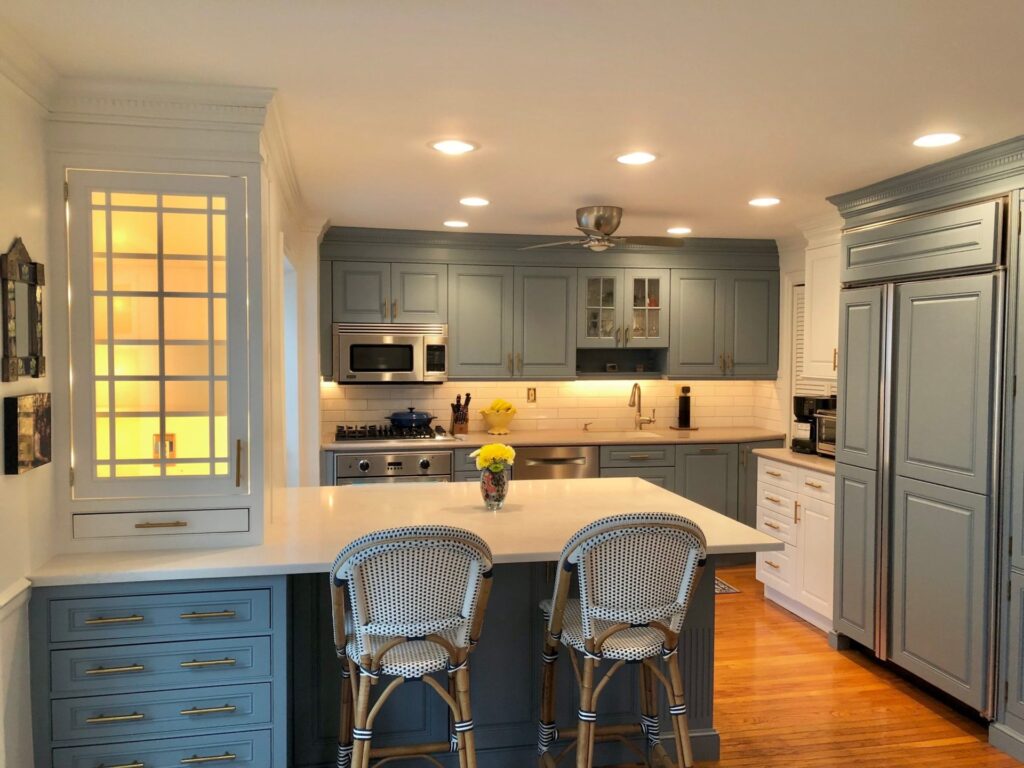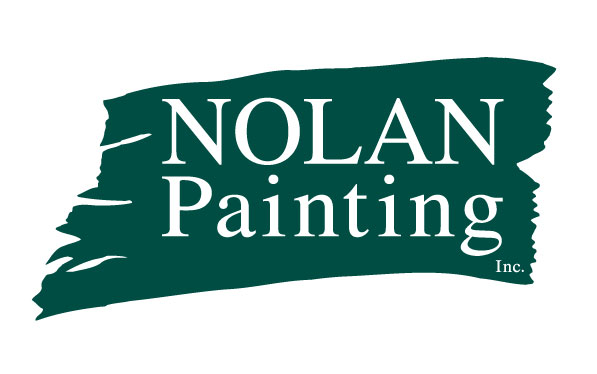Letting the Light In: Painting to Create Brightness in Your Home in the Greater Philadelphia Area

Many homeowners in the greater Philadelphia and Southeastern Pennsylvania area face challenges creating bright and inviting living spaces due to design and location of the house. Too often, architecture and environment conspire to minimize the amount of natural light that enters your home. For some, the problem is the limited windows of row houses. For others, it’s Victorians built without open living spaces, or homes nestled on wooded lots. In my own home, the porch that wraps around the front of my house, while beautiful, blocks all but the lowest sun from streaming through the windows to light up the living and dining room. The problem can be particularly vexing in winter, when you want to make the most of short days by bringing as much brightness into your home as possible.
With fall already in the air, now is the perfect time to think about how you can use paint to improve the look and feel of rooms that receive limited natural light.
Choosing Bright, Reflective Colors
Using light and bright colors naturally adds to the brightness of a room. “Bright,” however, should not be confused with “bold”: a pale pink is much brighter than a glaring fuschia. In general, choosing pale shades of whites, greys, and pastels help you optimize light, both natural and artificial, by maximizing light reflectance.
While all paints reflect light, how much light a particular color reflects is indicated by its Light Reflectance Value (LRV). The LRV scale runs from 0% to 100%, with 0% indicating a black with minimal reflectance and 100% being a completely reflective white, although in practice, it ranges from about 5% to 85%. The higher the LVR, the brighter a color will appear. Once you get below 50%, the color will be absorbing more light than it reflects and won’t do much to maximize brightness in a room. When selecting a paint color, look for the LVR on the back of the paint chip to help you determine how reflective each paint color is.
Although a higher LVR number is typically better for creating brightness, yellow paints present special challenges to this system. Yellow is the most highly reflective color on the spectrum and is often chosen to create warmth and light in dark spaces. Choosing a yellow that is too bright, however, can cause a jarring effect and bring too much intensity to the room. Pale and muted yellows can have a much more balanced and attractive appearance while still making the most of the light.
Selecting The Right Finish
Choosing a paint finish that reflects light can optimize the brightness of a room by allowing the walls to scatter and multiply light. That doesn’t mean you want to paint your walls with high gloss paint; not only do paints with significant gloss look out of place on large wall surfaces, they also magnify any imperfections on the wall itself. Part of the charm of older homes is their plasterwork, but accentuating a less-than-perfect wall finish with highly reflective paint isn’t the way to go. Instead, look for eggshell finishes that allow light to bounce softly while still being kind to variations in wall texture. Eggshell also has the added bonus of being easier to clean than matte paints.
Some paint manufacturers now offer paint with light-reflecting particles to reflect up to twice as much light than traditional paints. These formulations can allow you to increase brightness without adding gloss. Finishes vary among paint manufacturers, so be sure to test exactly the paint you are interested into evaluate its reflectivity. One manufacturer’s eggshell is another’s satin, and you want to be sure that the paint you select has the appearance you desire.
Testing Your Color
Always remember to test your paint samples to evaluate the color at different times of day, a step that is particularly important if the light in your room varies dramatically. A color that looks fantastic in full morning sun may appear drab and depressing only hours later, without the benefit of natural light. Changes in light may also draw out different undertones, making a white or grey finish appear warmer or cooler depending on light quality, and ultimately changing the feel of the room. You may want to avoid bluish or cool grey undertones particularly in north-facing rooms that don’t benefit from the warmth of sunlight. Look at the paint in the full range of natural and artificial light conditions it will be subjected to to ensure that you’re pleased with its evolving appearance.
Leveraging Trim and Moldings
Many older homes have beautiful trim that can be an invaluable asset in your quest for brightness. Painting trim and mouldings white can add depth and dimension to your rooms and create the feeling of spaciousness. High gloss whites will reflect light and add to the look of brightness while also accentuating the primary wall color for a clean, polished appearance.
Selecting the right white for your trim is just as important as your choice of wall paint. While bright whites can be beautiful in some rooms, limited natural light and gloomy weather can make it appear too grey in others. In these cases, warmer, creamier shades of white may be an ideal solution.
Consulting the Experts
Nolan Painting has over 35 years of experience providing the highest quality painting services to homeowners in the greater Philadelphia area, including Philadelphia, Montgomery, Chester, Delaware, and Bucks County. We understand the unique challenges presented by our local architecture and environment and can help you overcome them using our wealth of expertise and impeccable service. Our color specialists will meet with you to discuss your needs and make recommendations based on your space and personal style, allowing you to create bright, inviting rooms even in tricky lighting situations. Because all of our painters are full-time employees rather than subcontractors, you can be assured of consistent, reliable, and excellent results. Contact us today to learn more about how we can help you bring light into your home.

